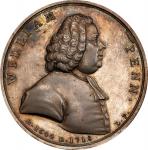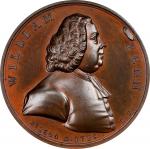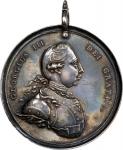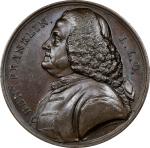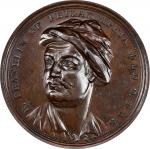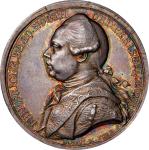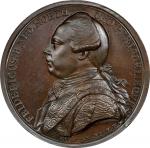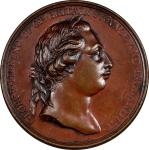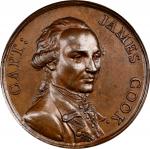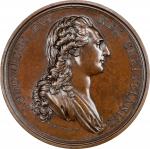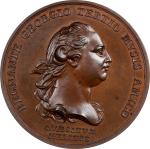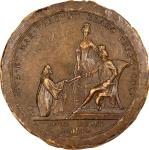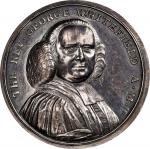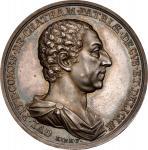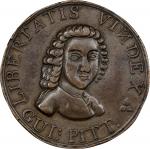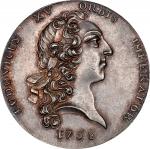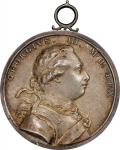1773 Carib War Medal. Betts-529. Cast silver with joined rim and integral loop, 55 mm. AU-58 (PCGS). 1773 Carib War Medal. Betts-529. Cast silver with joined rim and integral loop, 55 mm. AU-58 (PCGS). 1176.8 grains. Golden gray surfaces gather somewhat darker toning at the peripheries. Finely granular, as are all, due to their method of manufacture. A thin scratch alongside Georges forehead is the only noteworthy defect, otherwise, this piece suffered nothing more than a glimmer of high point friction since its production.<p><p>This medal was issued locally in the West Indies, on the island of St. Vincent, to troops engaged in putting down an uprising of the native / creole Caribs in late 1772 and early 1773. The medal was authorized by the Legislative Assembly of the Island of St. Vincent, making it a true West Indian medal rather than an English one. Its production method - cast, not struck - underscores this distinction. The Carib War engaged the native Caribs, a creole population of indigenous and African descent, against the English in a classic battle between colonizers and the colonized. The population of Saint Vincent exploded after the islands 1762 conquest in the Seven Years (French and Indian) War, and the new arrivals all expected to find land to establish sugar plantations. Their entitlement forced English authorities into traditionally native lands, and the natives fought back. Five months of guerrilla warfare against superior numbers of better outfitted troops ended with a treaty and a promise of "firm and lasting peace and friendship." These words, for those who know the history of North American Anglo-native relations (or the medals attendant to them), may sound familiar.<p><p>Among the regiments given this medal for their efforts in the Carib War was the 14th Foot, who arrived in Saint Vincent in 1772 direct from their service as part of the force that occupied Boston after 1768. After the Carib War, the regiment returned to North America: part was stationed in St. Augustine, Florida in 1774 and another section was shipped to Virginia on the eve of war in 1775. After serving under Lord Dunmore, including their presence at the destruction of Norfolk, the regiment removed to New York City and most of the remaining troops found their way into other regiments to serve against the American rebels. Two other regiments of British regulars were present. The 31st Foot, fresh from Florida, returned to America after the Carib War to serve in Quebec in 1776; they later surrendered with Burgoyne at Saratoga. The 70th Foot served briefly in New Jersey after its actions in Saint Vincent. The only analogous medal of this era, a silver British military decoration composed during the era of the American Revolution for an action in the New World, is the Germantown medal of 1777. That medal was a private production for one regiment, whereas the Carib War medal has the distinction of governmental authorization. Further, while the Germantown medals honor a battle in the late American War, they were produced afterward. The Carib War medals were awarded early enough and to enough troops who served in America that many of these were likely worn by combatants in the American Revolution while serving. From the Richard Margolis Collection. Earlier from A.H. Baldwins Auction XIV, June 2007, lot 836.

